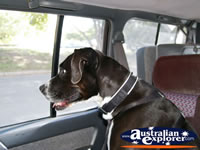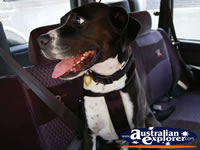When travelling with animals in a vehicle there are a number of things to consider to ensure both you and your pet's safety. Consider the following before you leave on your next holiday with your furry friends:
* Cats should be secured in a fully ventilated carrier/cat carry cage when travelling in the car. The carrier should be kept out of direct sunlight in your vehicle. Cats are particularly prone to stress when travelling so it is best to keep them in a comfortable, confined space. Feed your cat dry food before departing, this should help settle it's stomach.
* If possible you should try and arrive at your destination in daylight, this will allow your pet the chance to explore the new surroundings. Make sure, upon arriving at your destination, that you pay special attention to your animal and spend some time with them in the new environment.
* It is useful to introduce and familiarize your pet to the carrier it will be travelling in. Take your pet in the container for short trips in the weeks prior to departing. The animal should be able to lie down and stand up comfortably in it.
* Make regular stops on your journey to the campground and let the dog have a run around and something to eat/drink - this will be good for you too.
* Remember that animals can get car sick just like humans. You should test whether your animal is likely to get car sick by taking them for mini-trips prior to your holiday. If they do get car sick, consult your vet about one of the many remedies for animal motion sickness.
* The biggest no no regarding travelling with pets is leaving the animal in the car - especially in the hot, summer months. A ridiculous number of dogs die every year from being left in a hot car. The inside of a car can heat up to over 50 degrees in just minutes, at this temperature an animal would be near death. Any short-nosed breeds, for example Pugs, Bull Dogs etc are particularly prone to heatstroke/heat related problems.






